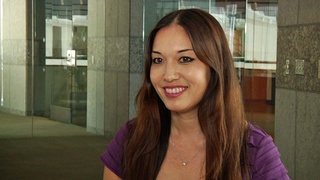Interviews
International dimensions of hapa identity
Essentially it is an American phenomena, because we do talk about this more than anywhere else. To some extent there’s Singapore has a pretty good awareness, but it’s really a Eurasian sort of conversation happening there. It’s mostly Eurasian, they don’t have the sort of Afro-Asian, the Latinos and so forth. And it’s a different kind of agenda. You know, the U.S. talks about race more than other countries do, by far. And even though they are foreigners, I wanted to talk about that.
And I actually was curious if any sort of trans-racial adoptees would participate. One person was thinking about it, but didn’t want her picture taken. [garbled] That’s an interesting way of defining it as well. And some people that weren’t—in my definition—Hapa, participated and I though that’s great, because that’s their self-identification. This woman came in, she’s black-white. She’s like, “I’m Hapa too.” I said, “Okay, let’s take your picture.”
Date: May 3, 2006
Location: California, US
Interviewer: Jim Bower
Contributed by: Watase Media Arts Center, Japanese American National Museum.
Explore More Videos

On Challenging Institutions
(1938-2020) Japanese American attorney and civil rights activist

Pop and Balls
(1938-2020) Japanese American attorney and civil rights activist

Re-examining Identity
(1941-2018) Japanese Canadian photojournalist and activist

Fitting in to both sides of her family
Jewish Japanese American journalist


Culture is an important part of one's identity
Jewish Japanese American journalist



Conflicted about immigrating to America (Japanese)
(b. 1925) War bride

Defining "Nikkei"
(1941-2018) Japanese Canadian photojournalist and activist

Unique Identity from Having Multiple Backgrounds
(b. 1938) Philipines-born hikiagesha who later migrated to the United States.

Growing up Japanese in Hawaii
(b. 1952) Former banking executive, born in Hawaii



Parents identification as Peruvian Okinawan
Okinawan American whose parents are from Peru.
